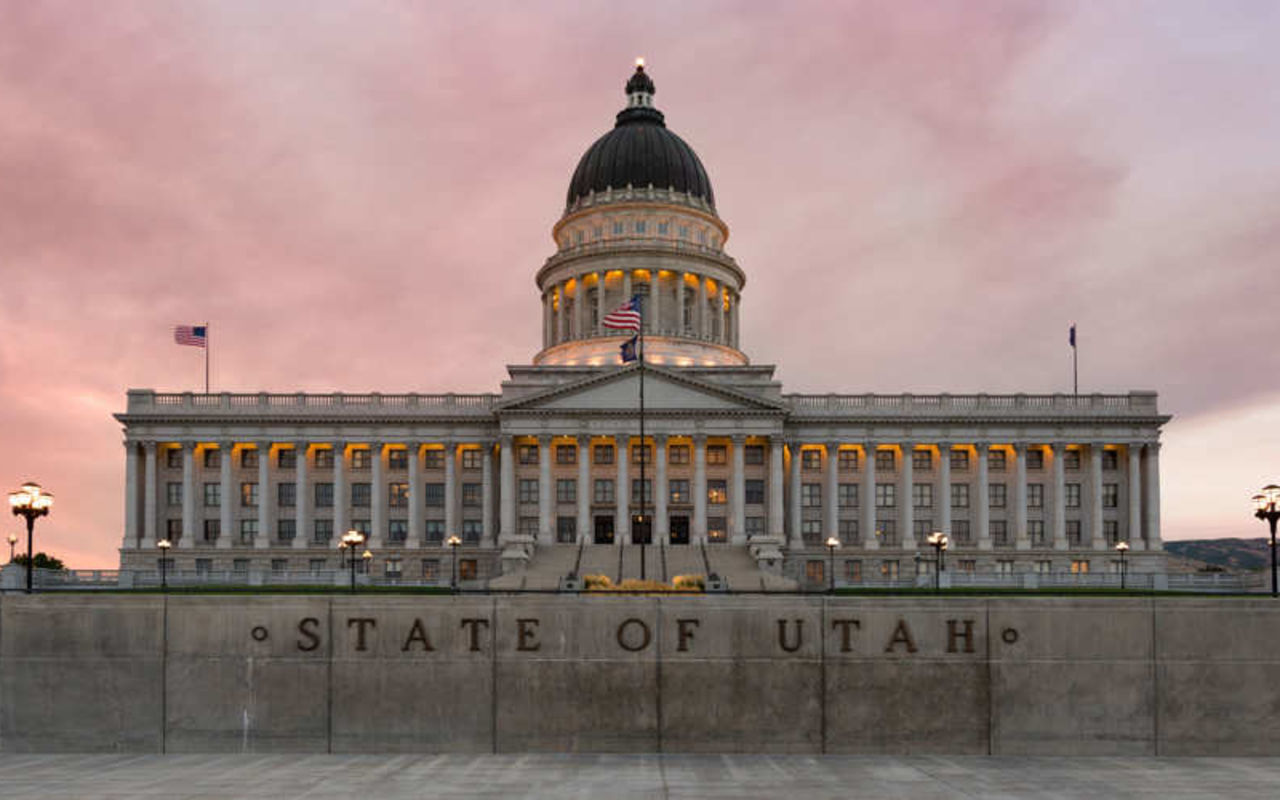Utah Capitol Building
Utah's Capitol building, located on a hill overlooking downtown Salt Lake City, is an elegant architectural masterpiece. The building is set on over 40 acres, with beautifully maintained and sculpted lawns, trees, flowerbeds, and shrubs. From the south steps, Yoshino cherry trees can be viewed circling the drive. From the front steps you see a spectacular view of the Wasatch and Oquirrh Mountains, and Salt Lake City below.
The gardens feature plants native to Utah. Visitors are welcome to walk through and enjoy a peaceful moment. A Vietnam Memorial is found on the west grounds, commemorating the 388 Utah natives who died in the war. To the east, a monument stands in honor of the Mormon Battalion - a group of 500 Mormons who pledged allegiance to their country by marching from Iowa to Mexico to fight in the 1846 Mexican conflict.
Wherever you roam on the Capitol grounds, you're sure to be reminded of those who have come before, and of the future yet to come. The building was constructed between 1912 and 1916, using granite from nearby Little Cottonwood Canyon. The dome is covered with Utah copper. There are 52 Corinthian columns.
Throughout the grounds, on the building itself, and within the interior are countless beehive representations. The beehive is Utah's state symbol, representing the values of industry and cooperation.
Seed money for the construction of the Capitol came in 1911 when the state collected almost $800,000 in inheritance tax from the estate of railroad magnate E.H. Harriman. The state bonded for another $2 million and legislators chose Richard Kletting's Renaissance Revival plan for a 404-foot long, 240-foot wide and 286-foot tall statehouse.
Inside, the Capitol is divided into two wings, each lined by marble Ionic columns weighing 25,000 pounds, with the Supreme Court on the east end and the House of Representatives on the west. In the center is the 165-foot tall rotunda. The ceiling of the rotunda is beautifully painted with clouds and seagulls, paying tribute to the state bird. Twelve paintings lining the rotunda were a WPA project and painted elsewhere then attached to the walls. The paintings depict scenes from the early history of the state and its settling. Statues in the Capitol include likenesses of Brigham Young and Philo T. Farnsworth (inventor of television).
The House of Representatives is home to 75 state leaders during Utah's 45-day legislative session, which begins in January. Representatives serve two years and are elected from districts of about 25,000 people. The Senate, which is on the north side of the third floor, is where the state's 29 senators do business during the session. Both the House and Senate are open to the public during legislative sessions.
Other rooms of note include the State Reception Room, better known as the Gold Room, which is used for important state functions and is adorned with French, Scottish, Russian and English period pieces. The Governor's Office is on the west end of the second floor directly below the House. The first floor houses a visitor center and exhibits of historical significance.
Today's Capitol is actually Utah's second. The first Capitol Building was in a small town called Fillmore, built there by federal decree, but only one wing of that building was finished before Salt Lake City was made the territorial capitol in 1855. Between then and January 4, 1896, when Utah became a state, the Legislature met at different locations around the city.
Utah Capitol Building | Photo Gallery

Utah Capitol Building